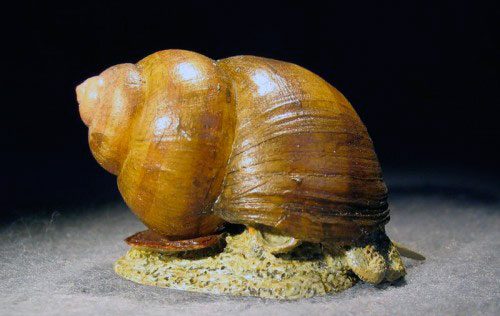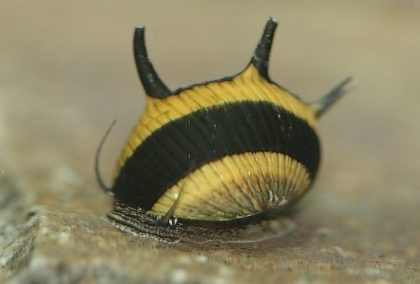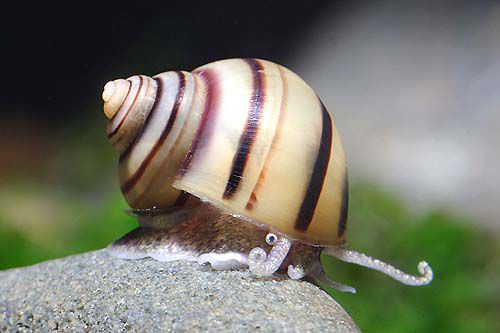
Spicy snail: content, description, reproduction, photo.

Spixie snail can be recognized by the oval shape of the shell, which is somewhat narrowed upwards. It is also smooth and has a white or yellow color with dark brown stripes that twist in a spiral.
The body of the snail can be either yellow or brown, but there are always dark spots on it, the number of which is constantly changing.
The name of the mollusk Asolene spixi is translated into Russian as “Elf snail”. Its tentacles are excessively long in relation to the length of the body. Spixies are a bit reminiscent of the well-known Ampoules for a long time, but still they have many differences both in appearance and in habits.
The first difference is that they grow much smaller than Ampoules – no more than 3 cm in diameter; the second is that elves do not have a breathing tube, their “antennae” are much longer; thirdly, they do not need to leave the water to lay their eggs, as they do this on stones, snags and leaves.
The way Spixy snails move is also unusual – they constantly keep the shell at the maximum height above the surface, cheerfully “walking” around the aquarium. Therefore, their movement speed is three times faster than the pace of smoothly crawling Ampullaria.
In the daytime, in aquariums with shallow soil, Elves burrow, but not completely, they are given out by protruding striped shells, which are clearly visible on both light and dark soil. Activity is shown at night. If there is no soil in the aquarium, then there is practically no difference between their night and day behavior.
At high water temperatures (+27-28°C), snails are more active than in cool water, which is explained by the peculiarities of their natural habitat. Also, Spixy snails prefer soft or medium hard water with a neutral or slightly acidic reaction.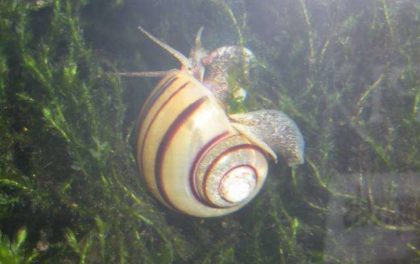
If the Elves lack food, then they are not averse to diversifying their diet by eating representatives of other types of snails, especially smaller ones than themselves (coils, pond snails, physical). But they often have to fail, as their victims are crammed into places difficult for the Elves to reach.
Some aquarists have tried to “involve” the Elves in the fight against the excess number of other snails in the indoor pond. The results of such experiments have been mixed, but most aquarists agree that, despite Spixy’s tendency to eat snails and their eggs, in general this does not significantly affect the number of other snails in the aquarium.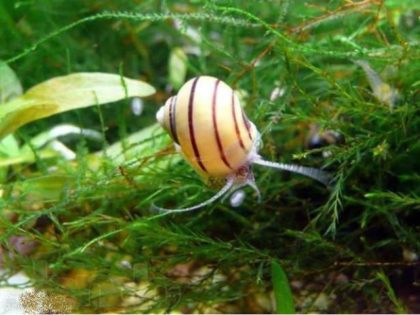
Spixies are unpretentious in maintenance and consume a variety of foods: dry flakes, granules, tablets, boiled cabbage, dandelion, oak and almond leaves, spinach and algae.
These snails are very voracious, so they eat everything they find, but plants are the last thing.
Elves breed relatively easily, and juveniles grow up quite quickly, especially at an early age.




